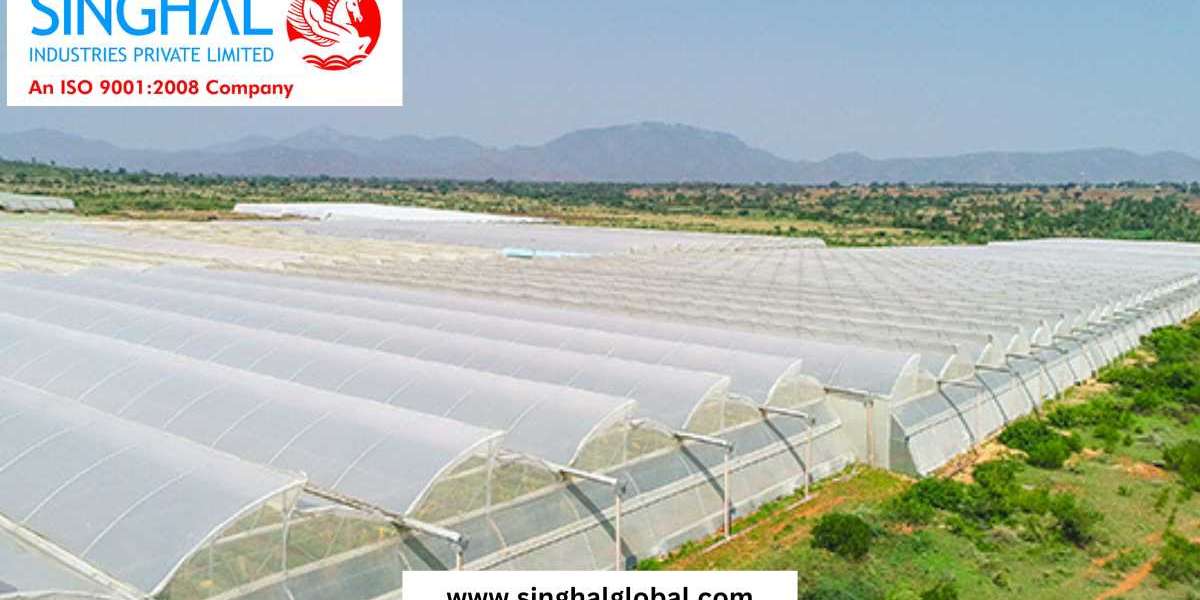As the world grapples with climate change and a growing demand for food, the agriculture industry is increasingly looking for solutions to optimize food production. One such solution is the use of greenhouse films, which play a crucial role in creating controlled environments that foster better plant growth. These films, made from durable plastic materials, allow farmers to create ideal conditions for crops while offering significant benefits in terms of efficiency, sustainability, and cost-effectiveness. This article explores the importance of greenhouse films, the role of greenhouse film manufacturers, and how a plastic film greenhouse can revolutionize farming.
What is Greenhouse Film?
Greenhouse film is a specialized plastic covering used in greenhouse structures to protect plants from harsh weather conditions while allowing optimal sunlight penetration. This film serves multiple purposes in greenhouse applications, including light diffusion, temperature regulation, and humidity control. Made from materials like polyethylene (PE), polypropylene (PP), or polyvinyl chloride (PVC), greenhouse films are designed to be UV-resistant, durable, and weather-resistant, ensuring they can withstand varying climatic conditions.
The use of Greenhouse films in agricultural settings provides a variety of benefits. These films can trap heat, reduce wind impact, and protect crops from rain, pests, and extreme temperature fluctuations. This controlled environment allows farmers to extend the growing season, improve crop yields, and reduce the reliance on pesticides and fertilizers.
The Role of Greenhouse Films in Agriculture
Greenhouse films are an essential component of modern farming practices. By creating a controlled environment, they help farmers manage environmental factors that can affect plant growth. Here’s how greenhouse films contribute to agricultural success:
Enhanced Light Transmission: Greenhouse films are designed to transmit light efficiently while diffusing it within the structure. This helps in optimizing the photosynthesis process, ensuring that plants receive the right amount of light for healthy growth.
Temperature Control: One of the most significant advantages of greenhouse films is their ability to regulate temperature. These films trap heat inside the greenhouse, which is crucial in colder climates, while also allowing for adequate ventilation in warmer regions. This temperature control ensures that plants grow in a stable environment, free from extreme fluctuations.
Protection from Weather and Pests: Greenhouse films shield crops from harmful weather conditions such as heavy rain, hail, and extreme heat. They also provide protection from pests and insects, reducing the need for harmful chemical pesticides. By maintaining a controlled environment, these films promote healthier plant growth, resulting in higher yields and better-quality produce.
Water Conservation: The controlled environment inside a greenhouse also leads to more efficient water use. With better humidity control and reduced evaporation, greenhouse film structures help conserve water, making them an eco-friendly choice for sustainable farming.
Extended Growing Seasons: In regions with cold winters or erratic weather, greenhouse films enable year-round farming by extending the growing season. With the ability to trap heat, greenhouse structures allow crops to thrive even in less-than-ideal conditions, ensuring that farmers can grow crops outside of traditional growing seasons.
Types of Greenhouse Films
There are various types of greenhouse films available in the market, each offering different features and benefits. The most common types include:
Single-Layer Greenhouse Film: These films are made from a single layer of plastic, typically polyethylene. Single-layer films are cost-effective and provide basic protection from the elements. However, they may not offer as much insulation as multi-layer films.
Double-Layer Greenhouse Film: This type of greenhouse film consists of two layers of plastic, which helps to improve insulation and thermal efficiency. The space between the two layers acts as an additional barrier, trapping more heat inside the greenhouse, making it ideal for colder climates.
UV-Resistant Greenhouse Film: UV-resistant films are designed to block harmful ultraviolet rays from the sun, protecting plants from UV damage. These films also have a longer lifespan as they resist degradation caused by UV exposure, making them a more durable option for long-term use.
Anti-Condensation Greenhouse Film: Anti-condensation films are designed to reduce moisture buildup on the interior of the greenhouse. This prevents water droplets from falling onto plants, which can cause fungal growth and other diseases. These films improve the overall health of crops by ensuring proper ventilation and moisture control.
The Role of Greenhouse Film Manufacturers
The role of a greenhouse film manufacturer is vital to the agricultural industry, as they provide the materials necessary to create the controlled environments that are essential for modern farming. These manufacturers focus on producing high-quality films that meet the specific needs of growers, ensuring that the films are durable, UV-resistant, and provide the optimal amount of light transmission.
Greenhouse film manufacturers also offer a range of products designed for different climates and farming practices. Whether it’s a high-altitude region with low temperatures or a tropical climate with high humidity, these manufacturers produce films that cater to the unique environmental conditions. With advancements in technology, manufacturers are continually improving the properties of greenhouse films, such as making them more energy-efficient, longer-lasting, and resistant to wear and tear.
Plastic Film Greenhouse: A Game-Changer in Farming
A Plastic film greenhouse is a structure that uses plastic films to cover and protect crops. These greenhouses are widely used in various agricultural sectors because of their affordability, ease of installation, and flexibility. Unlike traditional glass greenhouses, which can be expensive and heavy, plastic film greenhouses are lightweight and cost-effective. They can be constructed quickly and offer a wide range of options for customization, depending on the needs of the farmer.
Plastic film greenhouses are ideal for small to medium-scale farmers, as they provide an affordable solution for high-efficiency farming. The flexibility of plastic films allows farmers to easily adjust the greenhouse design to accommodate different crop types and environmental conditions. This adaptability makes them suitable for a wide range of crops, including vegetables, flowers, and fruits.
FAQs
1. How long do greenhouse films last?
The lifespan of greenhouse films depends on the material and the conditions in which they are used. On average, high-quality polyethylene films can last between 3 to 5 years, while UV-resistant films may last longer due to their enhanced durability. Proper maintenance, such as cleaning the films regularly and ensuring proper ventilation, can also extend the life of the film.
2. Can greenhouse films help with pest control?
Yes, greenhouse films provide a barrier against pests, including insects and small animals. The sealed environment inside a greenhouse helps keep pests out while reducing the need for harmful chemical pesticides. Anti-insect greenhouse films with specialized coatings can further enhance pest control by acting as a physical barrier.
3. How do greenhouse films affect plant growth?
Greenhouse films play a critical role in promoting plant growth by providing optimal conditions for photosynthesis, regulating temperature, and controlling humidity. The films ensure that plants receive the right amount of light, prevent extreme weather damage, and offer protection from pests and diseases, resulting in healthier plants and better yields.














